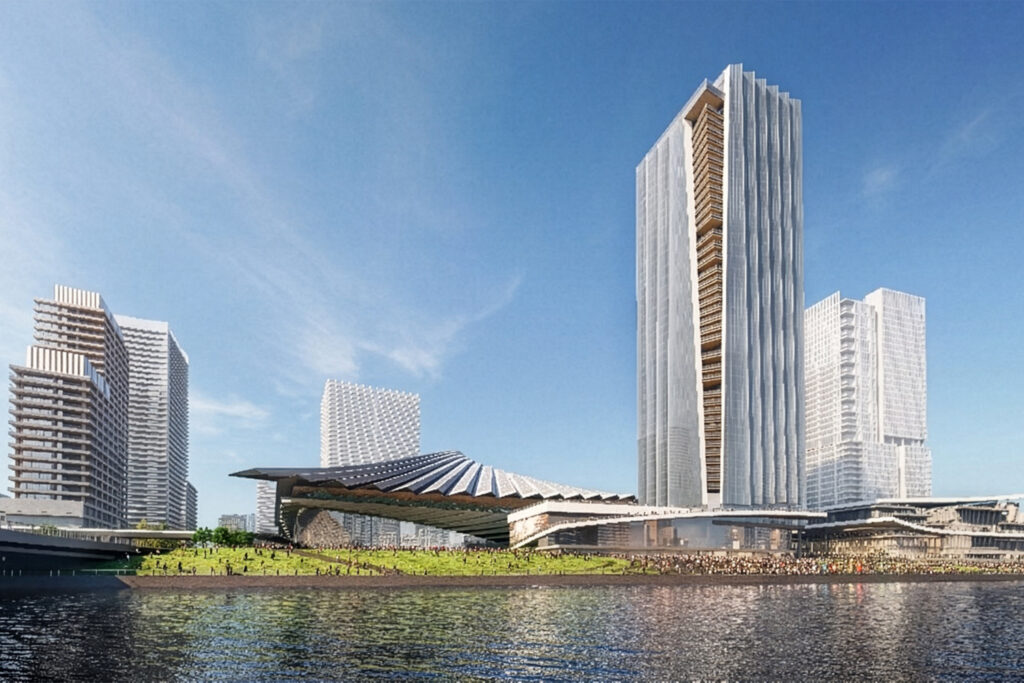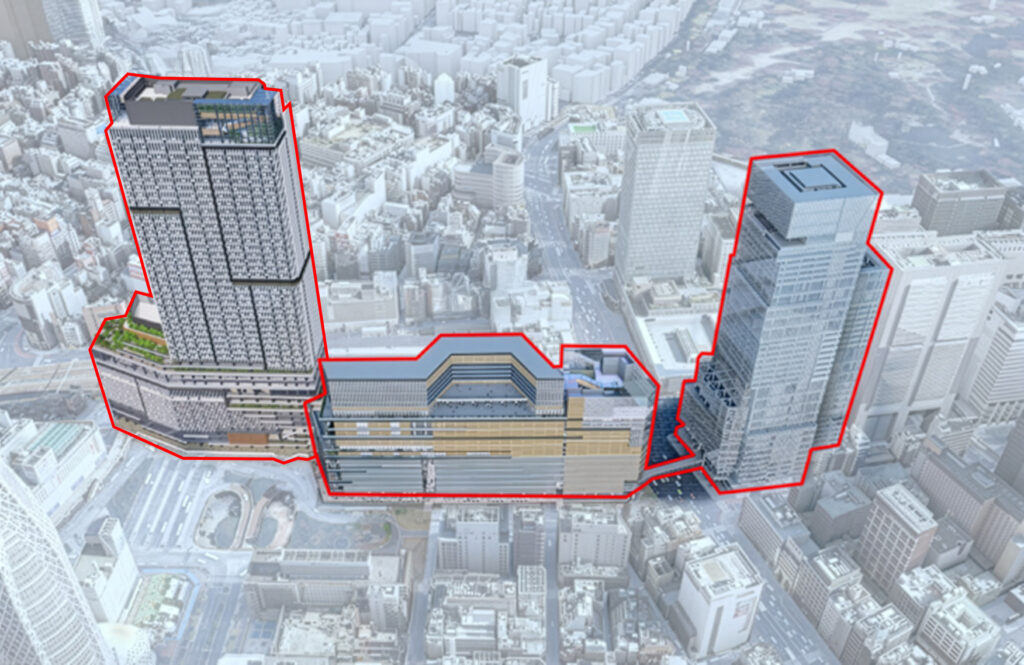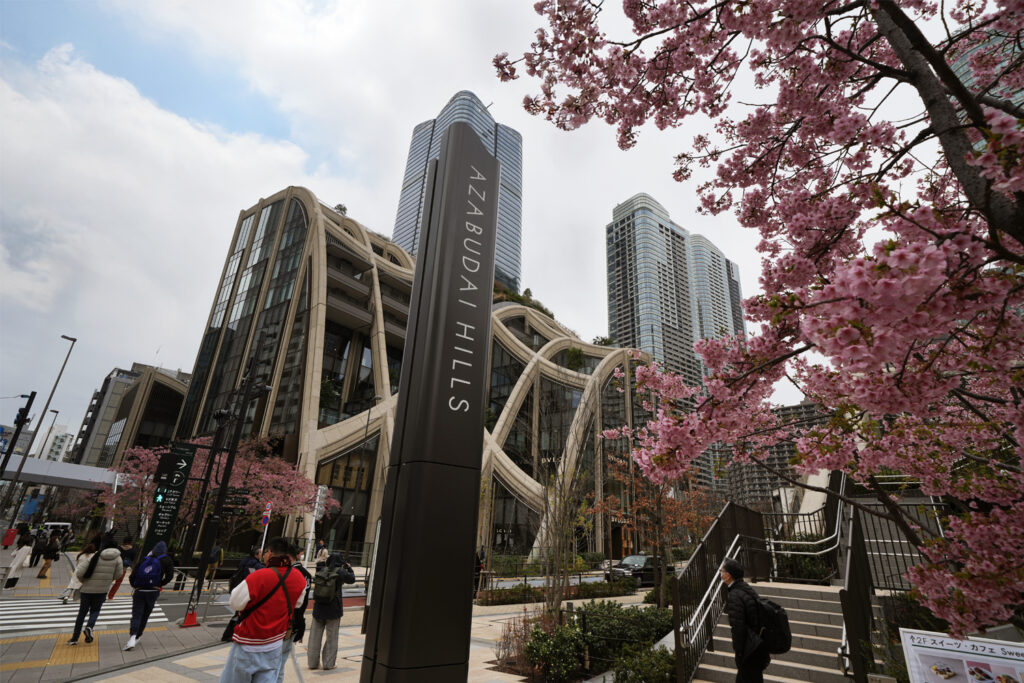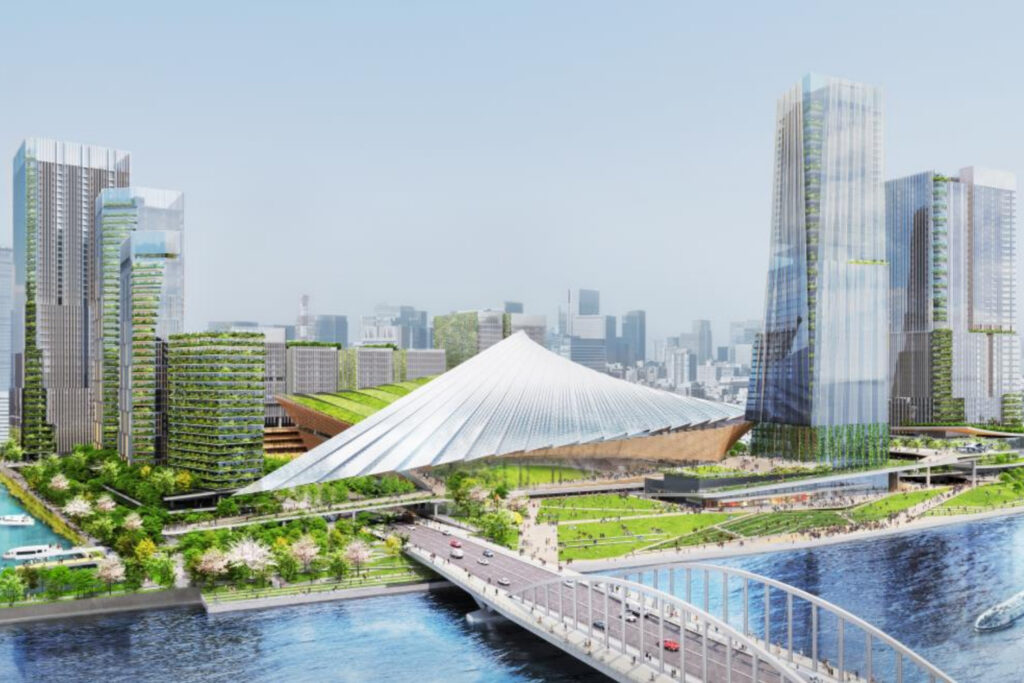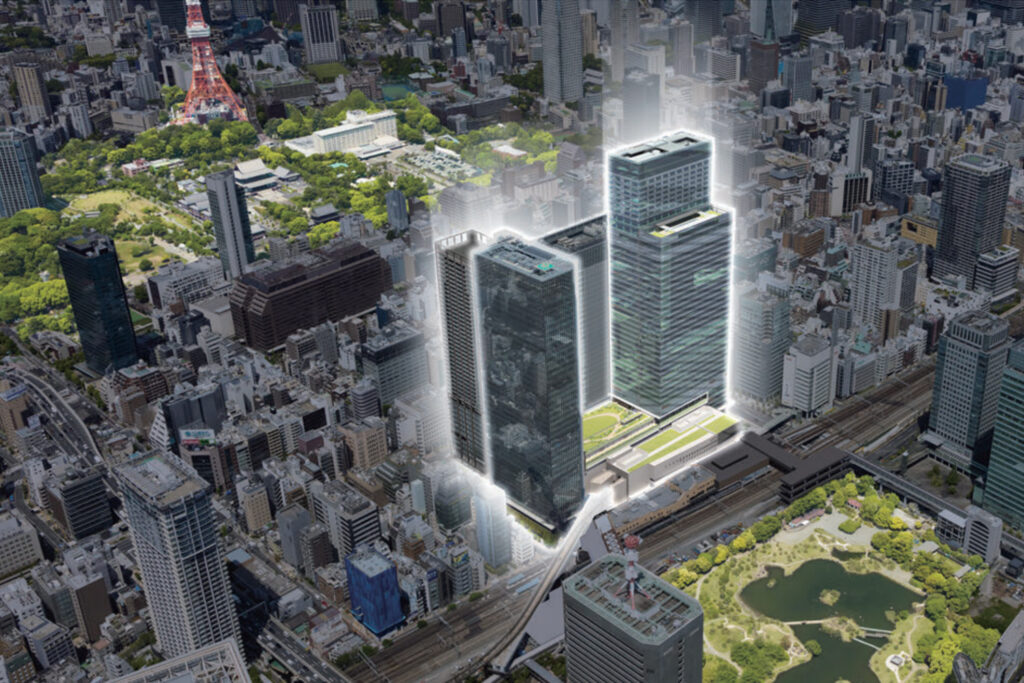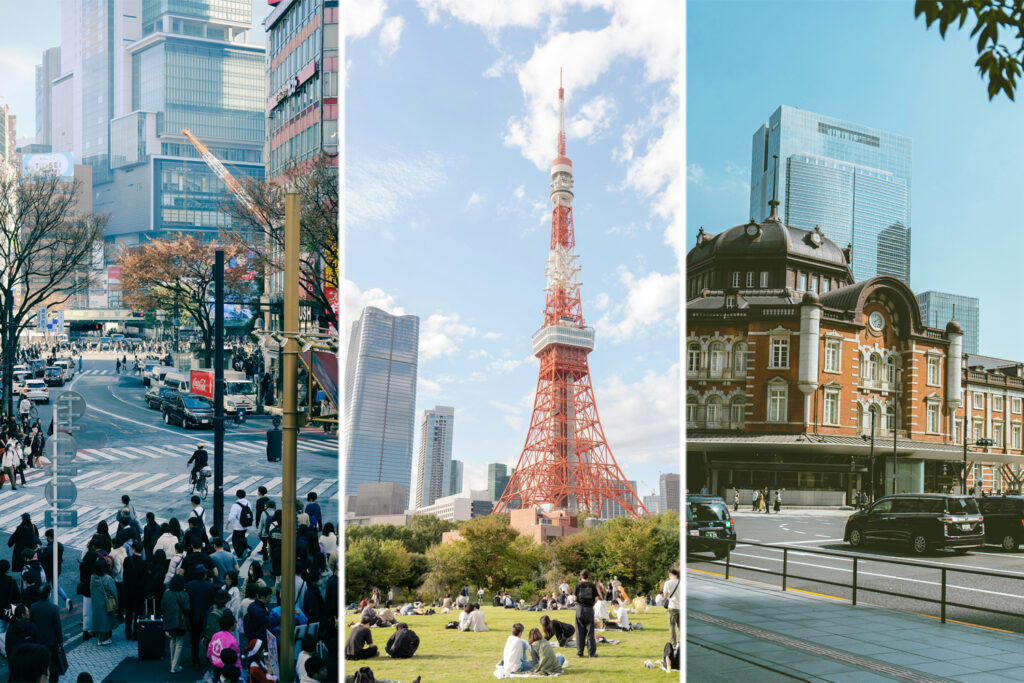
Living in Tokyo’s most exclusive wards means access to Japan’s finest real estate markets and unmatched urban amenities. These prestigious neighborhoods house international corporations, government offices, and luxury developments that define Tokyo’s skyline.
The three wealthiest wards, Minato, Chiyoda, and Shibuya, each offer distinct advantages for residents and investors. From diplomatic quarters and corporate headquarters to entertainment districts and cultural centers, these areas shape Tokyo’s economy and lifestyle standards.
Whether you’re searching for a home near international schools, seeking investment properties with strong value retention, or wanting proximity to Tokyo’s business centers, understanding these premier wards helps you make informed real estate decisions. This guide explores what sets Minato, Chiyoda, and Shibuya apart as Tokyo’s most desirable addresses.
1. Minato Ward: Tokyo’s Ultra Luxury Living
Home to Japan’s Most Wealthy
Minato Ward, Tokyo’s crown jewel, hosts the most exclusive residences for Japan’s wealthiest individuals. Home to CEOs and corporate executives like Hiroshi Mikitani (Rakuten), Takashi Okuda (Suntory Holdings), and Masayoshi Son (SoftBank Group), Minato Ward is a haven for high-powered professionals. With over 10% of Tokyo Stock Exchange CEOs residing here, Minato boasts an estimated average annual income of JPY11-12 million per capita. It is also home to the most expensive property ever sold in Japan. The Azabudai Hills Aman Residences, the penthouse of the Azabudai Hills luxury development. It was sold to fashion mogul, Yusaku Maezawa for JPY30 billion.
Rooted in the Edo period, Minato’s hillsides were chosen by wealthy daimyo and samurai families for lavish mansions. Today, Minato City stands as a business center housing the headquarters of major companies, including Honda, Sony, and Google.

This is one of the most sought-after areas for rental properties, blending luxury, convenience, and international appeal. Its prestigious neighborhoods attract a diverse mix of professionals, diplomats, and expatriates drawn to the ward’s proximity to embassies, global corporate headquarters, and world-class amenities. Minato offers a wide range of rental options, from stylish apartments in modern high-rises to elegant homes tucked away in serene, tree-lined streets. The area’s excellent transportation links, vibrant cultural scene, and refined atmosphere make it a top choice for those seeking an elevated lifestyle in the heart of Tokyo.
-> Search luxury Short Term and Long-Term Tokyo rental properties
Minato Ward by the Numbers
Minato is the highest-income ward in Japan, with an estimated average annual income of JPY 11- 12 million per capita and more than 10% of Minato’s total population is foreigners. As of 1 July 2015, Minato had an official population of 243,094, and a population density of 10,850 persons per km².
The ward’s economic strength extends beyond individual wealth. Minato is home to the headquarters of many large domestic companies, including Honda, Mitsubishi Motors Corporation, NEC, Nikon, SoftBank Group, Sony and Fujitsu. This concentration of corporate headquarters contributes to the ward’s daytime population surge and its position as Tokyo’s business center.
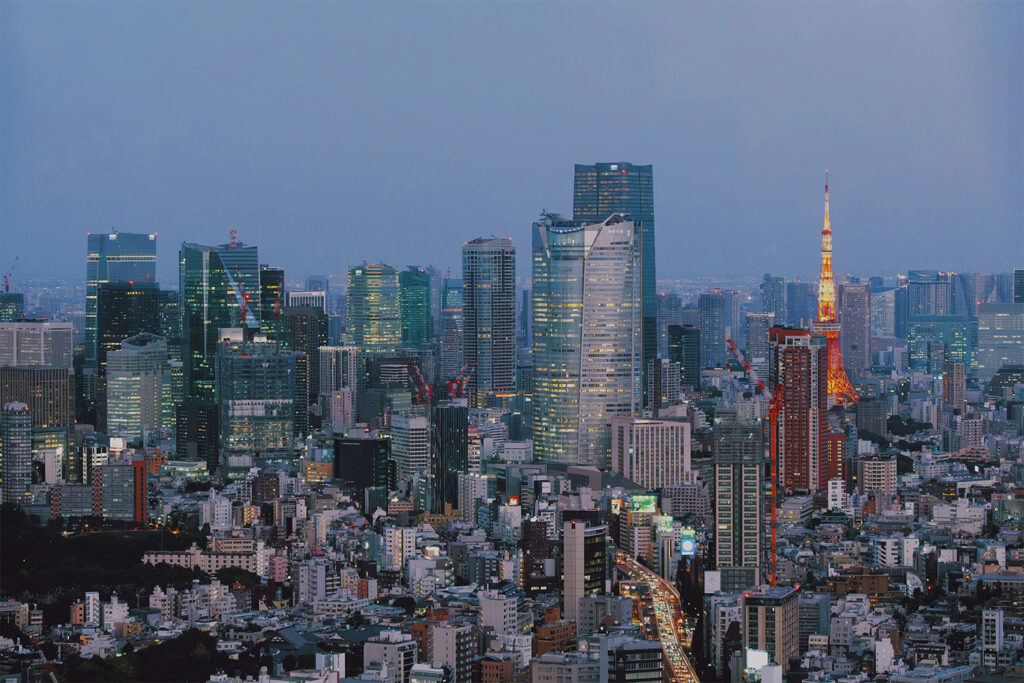
Azabu: The Exclusive Allure
The name “Azabu” carries with it an air of mystique, symbolizing an esteemed address synonymous with luxury and exclusivity. “Owning property in Azabu means joining an exclusive group. Whether in trendy Azabu Juban or artistic Nishi-Azabu, this area attracts Tokyo’s elite.
To elaborate, Azabu Juban radiates international allure, boasting streets adorned with embassies and exclusive residences. Recognized for its lavish real estate and upscale establishments, Azabu Juban serves as a sanctuary for celebrities, drawing a discerning crowd seeking privacy and sophistication. Esteemed personalities in the entertainment industry and global influencers are drawn to Azabu Juban’s chic lifestyle and deluxe amenities.
Nishi-Azabu, nestled between the lively Roppongi and the tranquil Azabu Juban, exudes a distinctive charm. Less ostentatious than its neighbors, Nishi-Azabu offers a refined elegance. The famous Gompachi, where scenes from Kill Bill were filmed, is located in this area.
Roppongi: Where Nightlife Meets Culture
Roppongi, a dynamic district, seamlessly blends vibrant nightlife, cultural attractions, and a thriving business scene. The skyline of Roppongi is dominated by architectural marvels such as Roppongi Hills, Tokyo Midtown, and the Grand Hyatt, establishing it as a hub for both business and luxurious living. The district’s prosperity is also evident in its international flair, drawing in multinational corporations. These include Microsoft Japan and Goldman Sachs, as well as affluent expatriates, creating a cosmopolitan atmosphere. This diversity manifests itself in a diverse array of world-class restaurants, bars, and clubs, catering to every taste and budget.

Akasaka: Upscale Dining and Entertainment
Akasaka stands as a magnet for political and business elites, drawing them in with its upscale dining and entertainment venues nestled close to government offices, embassies, and the financial powerhouses. Residents of this refined district enjoy a front-row seat to the city’s heartbeat. Akasaka is famous for its exclusive restaurants. Political leaders and business executives often meet here, making it a hub for important discussions and deals. Grand hotels like the ANA InterContinental Tokyo and Ritz-Carlton add a touch of luxury, while the vibrant nightlife of Akasaka Mitsuke and its proximity to Roppongi provide a dynamic atmosphere.
Toranomon: Dynamic Business Nexus
Toranomon, stands as a vibrant business district housing the headquarters of leading companies and financial institutions. This locale has witnessed significant redevelopment, welcoming modern skyscrapers, prestigious hotels such as The Tokyo EDITION and Hotel Okura, and upscale dining establishments. The skyline is adorned with high-rise residences, offering residents breathtaking views, particularly of the iconic Tokyo Tower. Toranomon Hills, a commanding landmark, symbolizes the district’s evolution into a refined urban landscape. The fusion of business dynamism and contemporary elegance in Toranomon appeals to a discerning crowd, further elevating the overall prestige of the Minato ward.
Shirokane: The Pinnacle of Prestige
Shirokane, a name that translates to “white gold,” is a picturesque enclave, is synonymous with prestige and luxury, housing Japan’s wealthiest families. Lined with elegant residences and associated with the illustrious Iwasaki family, founders of Mitsubishi Corporation, Shirokane stands as a symbol of affluence and exclusivity, making it a sought-after neighborhood for Japan’s elite. From the discreet tree-lined streets like Platinum Street to The Happoen Garden, a 17th-century masterpiece Japanese garden offers a serene escape with its koi-filled ponds, traditional teahouses. It’s a popular place where residents can truly live life to the fullest, surrounded by the best that Tokyo has to offer, all while embracing the quiet whispers of nature and the warmth of a close-knit community.
2. Chiyoda Ward: Where Politics Meets Prosperity
Tokyo’s Political and Corporate Heartbeat
Chiyoda Ward, Tokyo’s political epicenter, boasts the Imperial Palace at its core. Ranking second for new homes and apartments, it encompasses the Imperial Palace, Marunouchi, Otemachi business districts, and the affluent Bancho residential area, known for the most expensive residential land in Japan. With high land values and a focus on commercial spaces, detached houses are scarce. Hosting over a dozen international embassies, including Belgian, British, and Irish, Chiyoda is home to Tokyo Station and the Marunouchi business district. The ward features a popular 5 km running path around the Imperial Palace and houses prestigious universities like Meiji, Senshu, and Otsuma Women’s University.
Chiyoda Ward by the Numbers
As of October 2020, the ward has a population of 66,680, and a population density of 5,709 people per km² (14,786 per sq. mi.), making it by far the least populated of the special wards. Despite its small residential population, Chiyoda has a day population of around 850,000, giving it by far the highest day/night population ratio of all municipalities in Japan.
The ward’s economic significance is remarkable: The districts of Otemachi, Marunouchi and Yurakucho east of the palace (an area colloquially known as “Daimaruyu”) house the headquarters of 19 Fortune 500 companies, are the source of roughly 10% of the combined revenue of all Japanese companies, and produced the equivalent of around a quarter of the country’s GDP in 2017.

Bancho: Quiet Wealth
Nestled to the west of the Imperial Palace, Bancho stands as an exclusive residential haven with a rich historical legacy. Its tree-lined streets and upscale residences create a tranquil escape in the heart of the bustling metropolis. This sophisticated area has always attracted influential figures such as diplomats, business leaders, intellectuals, and renowned scholars, underscoring an enduring legacy of affluence. Comprising six districts, each ending in “-bancho,” the area holds both historical significance and a strong brand reputation. With excellent logistic accessibility and proximity to multiple train stations, Bancho is prized for its asset value and quality amenities.
Marunouchi: Corporate District
Marunouchi stands as Tokyo’s financial powerhouse, housing the headquarters of Japanese corporate giants like Mitsubishi. With its towering skyscrapers and modern architecture, including the iconic Tokyo Station, Marunouchi is a symbol of economic prowess and corporate sophistication. Many residents in this area are those who thrive on a fast-paced yet sophisticated lifestyle. Driven, ambitious, and appreciate the district’s unique blend of power, culture, and quiet elegance

Otemachi: Tokyo’s Financial Epicenter
Otemachi, at the heart of Tokyo’s business district, epitomizes modernity and corporate vitality. Boasting futuristic skyscrapers, including the renowned Tokyo Midtown Hibiya, Otemachi is a dynamic hub for commerce, finance, and innovation. The district’s sleek architecture and cutting-edge infrastructure attract global corporations, establishing it as a symbol of Tokyo’s position at the forefront of technological and business advancements. Otemachi is home to the headquarters of major financial institutions such as the Bank of Japan and multinational corporations like Mitsubishi UFJ Financial Group.
Nagatacho: Japan’s Political Heart
Nagatacho, adjacent to the Imperial Palace, serves as Tokyo’s political center, housing government buildings and offices. The district exudes political prestige, hosting the National Diet Building and ministries crucial to Japan’s governance. Nagatacho’s cultural resonance is further amplified by theaters and cultural institutions, creating a dynamic atmosphere where political influence converges with artistic expression, making it a unique and multifaceted district within Tokyo. Several key political figures and government officials reside in Nagatacho, contributing to its status as a political and cultural nexus.
3. Shibuya Ward: Youthful Energy Meets Wealth
Home to Japan’s Elite, Youth, and Fashion
Shibuya Ward, a dynamic district in Tokyo, is a vibrant hub known for its iconic Shibuya Crossing and trendy atmosphere. It is a cultural hotspot with a mix of modernity and tradition. Shibuya stands as a center for youth fashion, entertainment, and technology, featuring bustling shopping streets and nightlife destinations. The famous Shibuya Crossing, one of the world’s busiest intersections, symbolizes the energetic pace of the area.
The ward is home to numerous international corporations, fashion boutiques, and innovative tech hubs. Shibuya is also recognized for its diverse dining scene, offering a wide range of culinary experiences. With a youthful and cosmopolitan vibe, it attracts both locals and tourists alike. The presence of popular landmarks like the Hachiko Statue and Shibuya 109 adds to the district’s cultural richness, making Shibuya a must-visit destination for those seeking a blend of modern trends and urban excitement in Tokyo.
Shibuya Ward by the Numbers
As of January 1, 2024, Shibuya Ward has an estimated population of 230,609 in 142,443 households and a population density of 15,262.01 people per square kilometre (39,528.4 people/sq mi). The total area is 15.11 km² (5.83 sq mi).
The ward’s significance as a transportation hub cannot be overstated. Shibuya Station serves multiple rail companies and sees millions of passengers daily, making it one of the world’s busiest railway terminals. The area surrounding Shibuya Station has been undergoing large-scale redevelopment since 2010, with the entire project scheduled for completion in fiscal year 2027. This ongoing transformation positions Shibuya for continued growth and modernization.
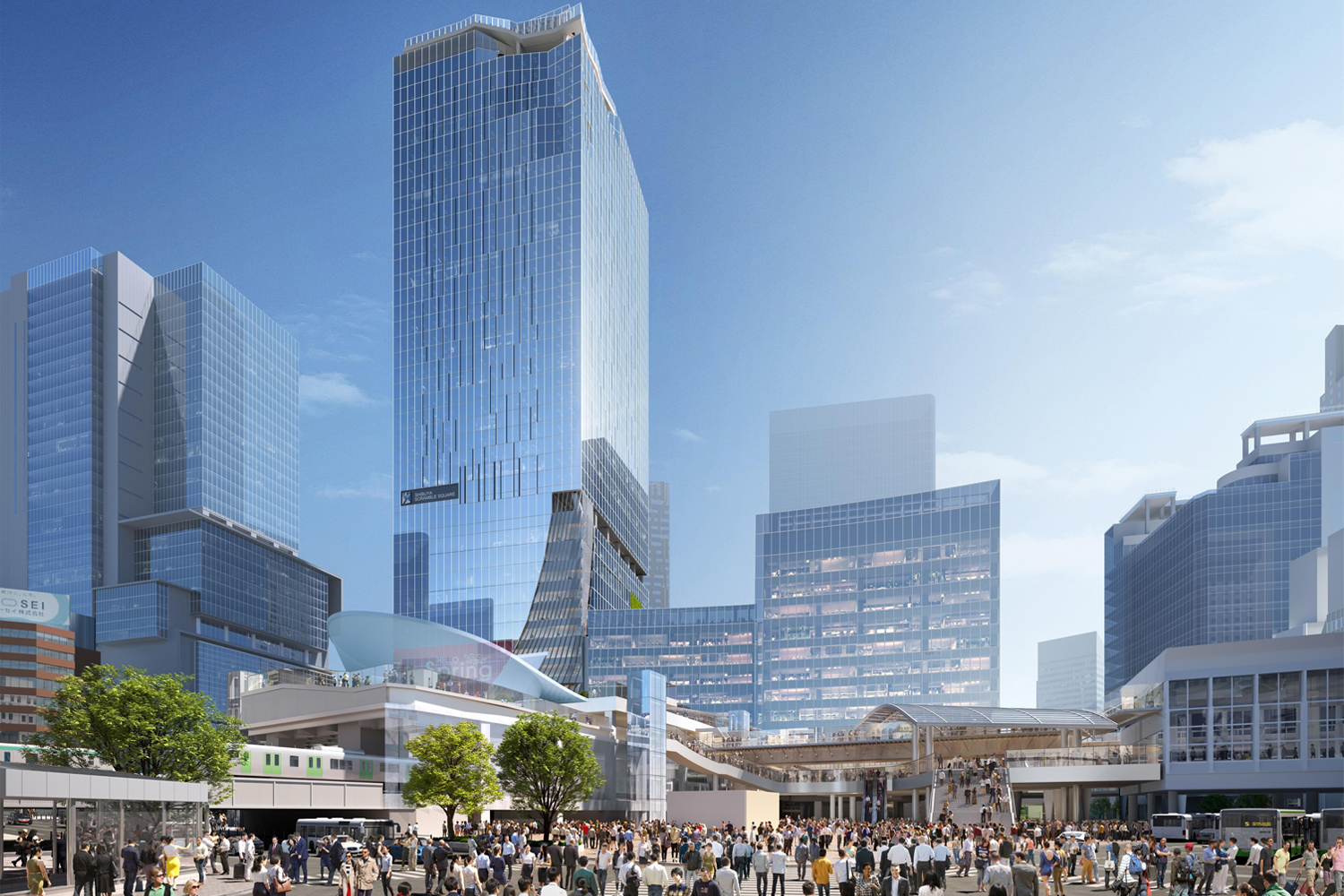
CGI Source: Press Release by Tokyo Metro – www.tokyometro.jp/news/2025/220646 (Japanese Only)
Harajuku: Youthful Fashion Hub
Harajuku, nestled near Shibuya, is a vibrant fashion haven renowned for its eclectic street style and unique boutiques. It sits right on the Yamanote Line, a loop railway encircling central Tokyo. This coveted address grants residents swift access to the city’s bustling business districts, upscale shopping avenues, and world-renowned entertainment hubs. Imagine living a stone’s throw from the neon-lit spectacle of Shibuya Crossing and the serene tranquility of Meiji Shrine, all within a few train stops.
It is home to renowned street brands like Bape and Supreme, Harajuku’s Takeshita Street and Cat Street draw fashion enthusiasts, influential designers, and celebrities exploring avant-garde styles. Beyond mere convenience, Harajuku boasts a hidden pocket of affluence. Tucked away from the bustling Takeshita Street, you’ll find pockets of serene residential neighborhoods. Think leafy streets lined with charming low-rise apartments, mini-mansions, and quaint cafes. This quieter side of Harajuku attracts a well-heeled demographic, including professionals, entrepreneurs, and celebrities seeking a sanctuary amidst the urban chaos.
Ebisu: Sophistication Redefined
Ebisu stands out as a culinary and entertainment hub, offering a sophisticated yet relaxed atmosphere. It’s a playground for the city’s elite, renowned for its high-end restaurants like Sukiyabashi Jiro, elegant bars like The SG club, and Yebisu Garden Place which consists of roughly a dozen buildings and skyscrapers, featuring a large array of restaurants and shops, the Westin Tokyo hotel. Yet, it also exudes a surprising charm, with quiet corners lined with traditional wooden houses and a laid-back, almost suburban feel.
Celebrities seeking both culinary excellence and trendy ambiance are often spotted in this area. This unique blend of affluence and serenity makes Ebisu a sought-after address for those seeking a slice of Tokyo’s vibrant while maintaining a sense of peace.

Daikanyama: Tokyo’s Stylish Haven
Daikanyama, nestled between Shibuya and Ebisu, exudes an artsy and hipster charm with its tree-lined streets, indie boutiques, and stylish cafes, making it known as Tokyo’s Brooklyn. Daikanyama’s history dates back to the Edo period when it was a popular destination for wealthy families and artists. This legacy is still evident in the area’s architecture, where traditional wooden houses and temples are juxtaposed against modern glass-and-steel structures. This blend of old and new creates a unique atmosphere that is both stylish and timeless.
The district appeals to the creatively inclined, boasting a thriving arts and culture scene. Indie boutiques like Comme des Garçons and Tsujiri Tea attract artists, musicians, and fashion designers such as Yohji Yamamoto, who reside in the area. Daikanyama’s bohemian vibe draws those seeking a unique and artistic escape.
Omotesando: Luxury Shopping Extravaganza
Often referred to as Tokyo’s Champs-Élysées, Omotesando is the city’s quintessential avenue of luxury. It’s a shimmering oasis of designer flagships, Michelin-starred restaurants, and chic boutiques, pulsating with the energy of the city’s elite. Luxury giants like Louis Vuitton and Chanel line the streets, drawing fashion icons, celebrities, and style-conscious travelers alike.
Landmarks like Omotesando Hills, designed by Tadao Ando, add to the area’s architectural prestige. This fashion mecca brings together haute couture and contemporary design, attracting international designers and discerning visitors from around the world.
Residents of Omotesando share a taste for the finer things in life, a deep appreciation for the area’s rich heritage, and a desire to balance glamour with serenity in one of Tokyo’s most vibrant neighborhoods.
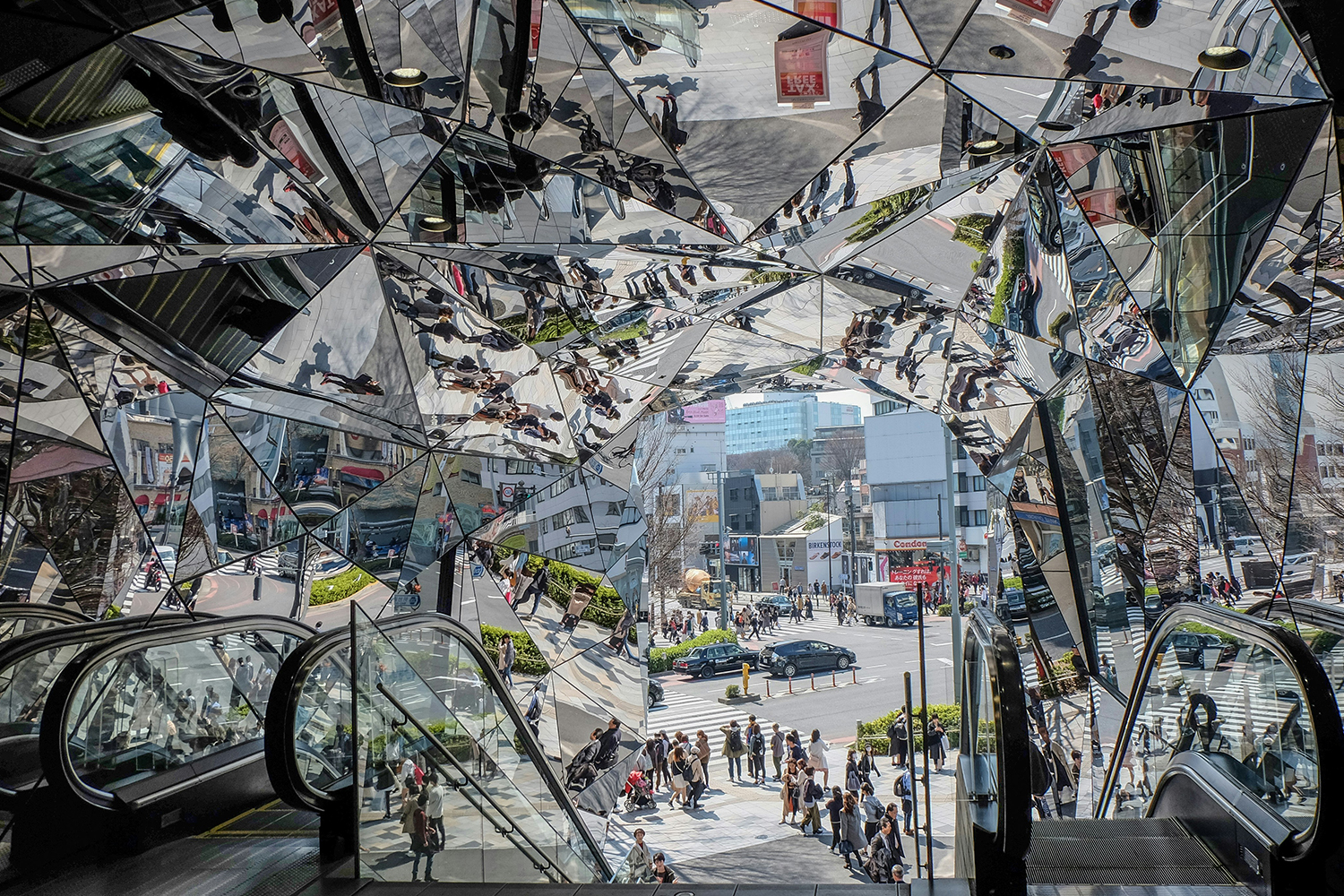
Shibuya: Trendsetting Epicenter
Shibuya, Tokyo’s dynamic trendsetting hub, embodies youthful energy with its iconic Shibuya Crossing and thriving street culture, drawing a diverse mix of locals and visitors. Beyond its reputation as a bustling retail and entertainment destination, Shibuya serves as a cultural and commercial hub, favored by global brands, influencers, and music enthusiasts. Its lively atmosphere attracts trendsetters, tech enthusiasts, and musicians, reflected in the presence of global companies like Google and Spotify.
Amidst the hustle lies Shoto, a residential haven offering tranquility and exclusivity through tree-lined streets and elegant dwellings. The area’s privacy attracts high-profile residents and celebrities seeking a luxurious escape within the city’s vibrant core. Shibuya’s excellent transportation network, including eight train lines like the Yamanote Line, further enhances its appeal for residents.
Yoyogi: Tokyo’s Cultural Haven
Yoyogi, nestled between the vibrant Shibuya and Shinjuku districts, surprises many with its rare blend of affluence and tranquility. This verdant neighborhood offers a coveted address, attracting a diverse mix of residents seeking the perfect balance of urban convenience and quiet charm. With the expansive Yoyogi Park and historic Meiji Shrine at its heart, the area reveals its wealth in elegant streets and hidden pockets of luxury.
Low-rise apartments with manicured gardens and spacious villas tucked away from the main street offer a sense of exclusivity and privacy. Convenience is another key ingredient in Yoyogi’s allure. The Yamanote Line, Tokyo’s iconic loop railway, puts the entire city within reach. Trendy boutiques in Harajuku, business districts in Shinjuku, and cultural gems in Shibuya are all just a short train ride away. Yet, stepping back into Yoyogi feels like entering a different world, where quiet cafes and charming bookstores offer a sense of community and belonging.
The recently opened Yoyogi Park Park-PFI Project has bought a modern edge to Harajuku’s cherished green spaces. This redevelopment blends innovation with sustainability, featuring urban sports facilities, running stations, and rooftop gardens powered by renewable energy. Designed to foster community connections, it regularly hosts fitness events and interactive activities, inviting both locals and visitors to experience a serene yet dynamic environment. Strategically linking Harajuku and Shibuya, the development highlights the area’s transformation into a thriving hub of culture and relaxation.

-> Discover more about Yoyogi Park Park-PFI and its features here
Minato vs. Shibuya vs. Chiyoda: Making the Right Investment Choice
When choosing between Tokyo’s three wealthiest wards, understanding their distinct characteristics helps make informed decisions about where to live or invest.
Economic Powerhouses with Different Strengths
According to 2024 official land price data, residential areas in the five central Tokyo wards (Chiyoda, Chuo, Minato, Shinjuku, and Shibuya) saw an average price fluctuation rise of 6.9%, compared to 5.2% in other wards*. This demonstrates the premium these central locations command. Chiyoda’s economic significance is clear: the Otemachi, Marunouchi and Yurakucho districts house the headquarters of 19 Fortune 500 companies and produce the equivalent of around a quarter of Japan’s GDP. Meanwhile, Minato maintains its position as the highest-income ward in Japan, with an average annual income of an estimated JPY 11-12 million per capita.
*Source: Tokyo Metropolitan Government (JP only)
Lifestyle and Demographics Define Each Ward
The resident profiles vary dramatically. Its estimated that more than 10% of Minato’s total population consists of foreigners, creating a notably international atmosphere. This contrasts with Chiyoda, which has a population of just 66,680 but swells to around 850,000 during the day, reflecting its role as Japan’s political and business center. Shibuya Ward, with 230,609 residents as of January 2024, attracts a younger demographic drawn to its vibrant culture and ongoing redevelopment projects.
Transportation and Accessibility Advantages
All three wards offer excellent transportation access. Minato contains stations on the Yamanote Line, multiple subway lines, and the Keikyu Line providing direct access to Haneda Airport in approximately 15 minutes from Shinagawa Station. Chiyoda includes Tokyo Station, the terminal for most Shinkansen lines, making it ideal for domestic travel. The station serves as the hub for JR East’s network, connecting to most major lines in the Kanto region. Shibuya Station serves nine different railway companies’ lines (JR East, Tokyo Metro, Tokyu, and Keio), making it one of Tokyo’s busiest terminals. The ongoing renovation project aims to simplify the notoriously complex station layout.
Investment Returns and Market Dynamics
Property prices in all three wards rank among Tokyo’s highest. Minato consistently appears at the top of Tokyo property price rankings in industry reports. Chiyoda offers limited residential inventory due to government and commercial use. The Imperial Palace and government buildings occupy significant ward area, constraining residential development. Shibuya undergoes continuous redevelopment. Major projects include Shibuya Stream (completed 2018), Shibuya Scramble Square (completed 2019), and Shibuya Upper West (expected 2027).
Hidden Costs and Considerations
Minato maintains strict building height limits in some residential areas while allowing high-rises in designated zones. The ward approved the 330-meter Azabudai Hills tower while preserving low-rise character in neighborhoods like Azabu Juban. Chiyoda imposes strict regulations near the Imperial Palace. Building heights are limited to preserve sight lines and the historic character of areas like Marunouchi. Shibuya actively encourages redevelopment through relaxed regulations in designated areas. The ward government partners with developers on major projects transforming the station area.
Future Development Impact

Each ward faces transformative projects. Minato continues developing the Toranomon area with multiple towers planned or under construction. The Toranomon-Azabudai district opened in 2023, adding significant luxury residential and commercial space. Chiyoda focuses on renovating existing structures rather than new construction. The Tokyo Station area continues gradual modernization while preserving historic facades. Shibuya undergoes the most dramatic transformation with multiple major projects through 2030. The station renovation represents one of Tokyo’s largest infrastructure projects currently underway.
Making Your Choice
Choose Minato for established luxury and international community. The ward suits those prioritizing prestige and proximity to international schools and embassies. Areas like Azabu and Roppongi offer numerous options for expatriate families.
Select Chiyoda for stability and central location. Ideal for those valuing proximity to Tokyo Station and government offices. The ward offers limited but prestigious residential options in areas like Bancho and Kojimachi.
Pick Shibuya for urban energy and ongoing transformation. Perfect for those seeking proximity to entertainment, shopping, and tech companies. The ward’s continuous redevelopment offers modern living options but requires tolerance for construction activity.
Each ward represents different aspects of Tokyo excellence. Understanding these characteristics ensures your choice aligns with both lifestyle preferences and investment goals. For specific price data and detailed market analysis, consult licensed real estate professionals or purchase industry reports from firms specializing in Tokyo luxury properties.
Remember to use an experienced and knowledgeable realtor such as Housing Japan. With 25 years of experience, they are your perfect partner when purchasing property in the center of Tokyo in one of these exclusive wards.
FAQ’s
1. Why is Minato Ward Tokyo’s Most Prestigious Area?
Minato Ward offers luxury living with embassies, global HQs, and world-class amenities. Exclusive areas like Azabu and Roppongi attract wealthy residents with stylish apartments and serene tree-lined homes.
2. What Makes Azabu Juban Tokyo’s Top Luxury Neighborhood?
Azabu Juban combines embassies, upscale dining, and exclusive residences. It attracts celebrities and diplomats with privacy, sophistication, and proximity to cultural hotspots like Roppongi.
3. Why Is Chiyoda Ward Tokyo’s Political and Business Hub?
Chiyoda Ward features the Imperial Palace, Tokyo Station, and Marunouchi. It’s a top choice for professionals with luxury homes in Bancho and proximity to corporate HQs and universities.
4. How Does Shibuya Ward Blend Energy and Luxury?
Shibuya combines vibrant youth culture with upscale living. Areas like Omotesando offer luxury shopping, while Daikanyama and Ebisu provide elegant residences and dining for trendsetters and expats.
5. Where Do Expats Find Luxury Rentals in Tokyo?
Expats favor Minato and Shibuya Wards for luxury rentals. Roppongi, Azabu, and Hiroo offer global HQs and schools, while Daikanyama and Ebisu blend modernity with tranquility.
6. Are the Top 3 Wealthiest Wards in Tokyo good investment opportunities?
The Wealthiest Wards in Tokyo show good potential when it comes to real estate investments. Even with the higher prices of luxury properties, showing strong demand, and increasing rent opportunities continue to grow.
Check out related articles for more:
- Housing Japan Celebrates 25 Years of Transforming Tokyo’s Luxury Real Estate Market
- Tokyo Rents Increase: A Golden Investment Opportunity in Japan’s Capital
- LUXE Magazine by Housing Japan
- Maximize Property Value When Selling in Tokyo
- Mita Garden Hills: Tokyo’s New Standard for Luxury Living
What Next?
At Housing Japan, we specialise in buying, selling, and managing residential luxury real estate. Whether you are a local resident or simply seeking a second home or temporary residence for business trips, we have you covered. Our one-stop service includes expert management services, so you can sit back and relax knowing that everything is taken care of. Whether you are looking for a luxurious living experience or an investment opportunity, we are here to help you every step of the way.
Contact Us
Housing Japan
7F BPR Place Kamiyacho, 1-11-9 Azabudai, Minato-ku, Tokyo, Japan 106-0041

